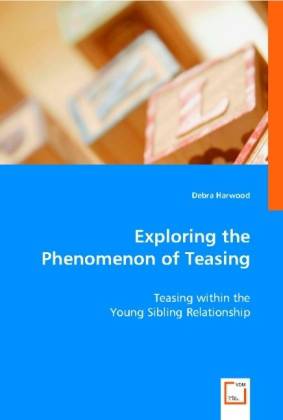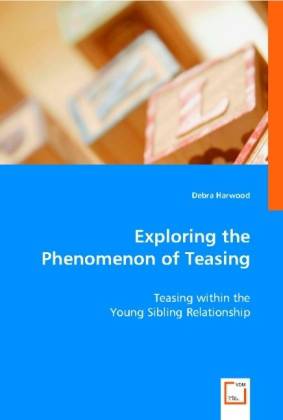
- Afhalen na 1 uur in een winkel met voorraad
- Gratis thuislevering in België vanaf € 30
- Ruim aanbod met 7 miljoen producten
- Afhalen na 1 uur in een winkel met voorraad
- Gratis thuislevering in België vanaf € 30
- Ruim aanbod met 7 miljoen producten
Zoeken
Exploring the Phenomenon of Teasing
Teasing within the Young Sibling Relationship
Debra Harwood
Paperback | Engels
€ 115,95
+ 231 punten
Omschrijving
Teasing is often regarded as a normal and common activity of child-hood, a rite of passage. Yet, teasing is a complex relational issue involving many elements such as intent, verbal utterances, nonverbal behaviour, meaning, interpretation, and emotional affect. And despite the prevalence of this common childhood experience, research addressing children's teasing is lacking. Studies of how young children experience, resist, and internalize childhood teasing in various contexts are noticeably absent from the research literature. The young sibling bond provides a unique window of opportunity to explore the teasing phenomenon, as this intense, complex, and emotional relationship is an early practice ground for children to learn to inter-act, imitate, play, converse, and negotiate conflict. This book discusses a study that explored, through naturalistic obser-vations and interviews, the teasing experiences of three dyads of preschool age siblings.
Specificaties
Betrokkenen
- Auteur(s):
- Uitgeverij:
Inhoud
- Aantal bladzijden:
- 392
- Taal:
- Engels
Eigenschappen
- Productcode (EAN):
- 9783836489300
- Verschijningsdatum:
- 11/04/2008
- Uitvoering:
- Paperback
- Formaat:
- Trade paperback (VS)
- Afmetingen:
- 152 mm x 229 mm
- Gewicht:
- 521 g

Alleen bij Standaard Boekhandel
+ 231 punten op je klantenkaart van Standaard Boekhandel
Beoordelingen
We publiceren alleen reviews die voldoen aan de voorwaarden voor reviews. Bekijk onze voorwaarden voor reviews.








